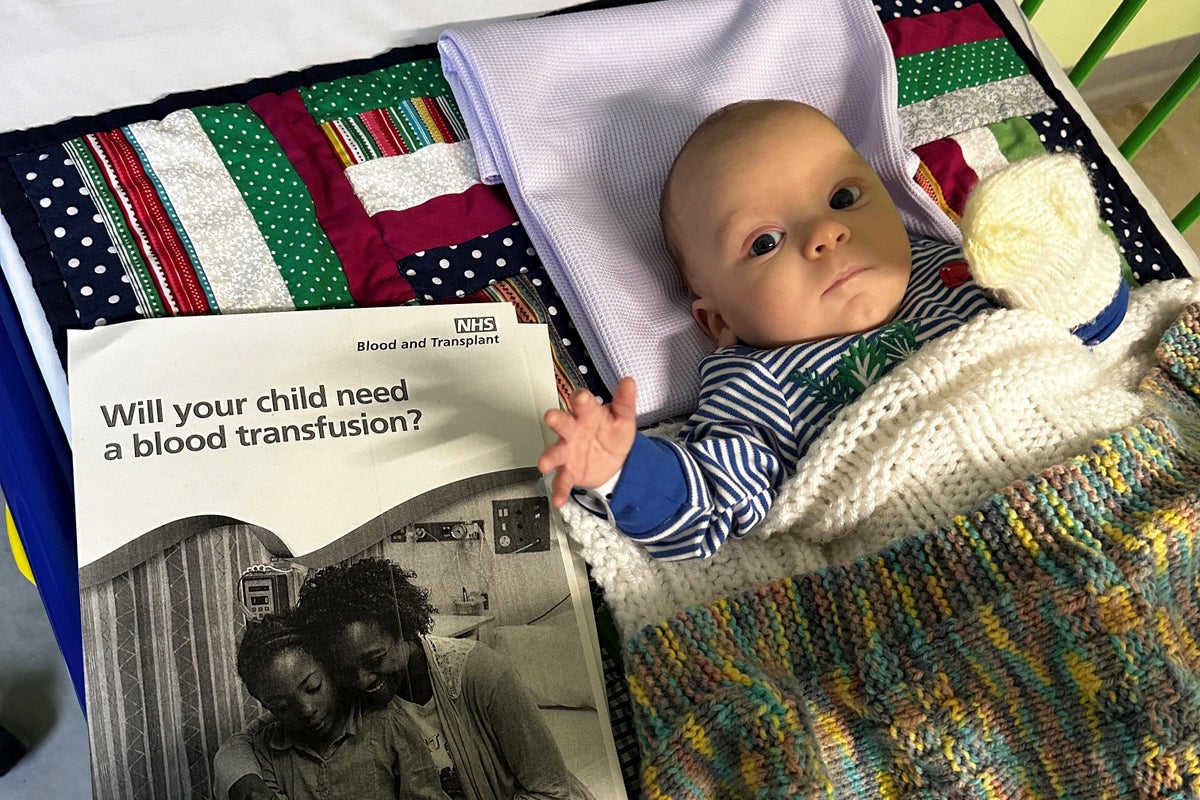
The health service has launched a personalised “blood matching” test for people with rare conditions who require regular blood transfusions.
The move will allow donor blood to be matched to these patients more closely, to reduce the risk of severe reactions.
The new test uses genetics to generate detailed blood group information.
It is the first time it has been used for patients with rare inherited anaemias – with around 300 people eligible for testing, according to NHS Blood and Transplant (NHSBT).
The programme has been backed by the family of toddler Woody Mayers, aged 22 months, who has a rare inherited anaemia called congenital dyserythropoietic anaemia (CDA) type 1.
The condition causes the bone marrow to struggle to produce healthy red blood cells, which carry oxygen around the body.
It is estimated to affect between one to five out of every million babies.
Patients have low haemoglobin levels, meaning Woody relies on blood transfusions every four weeks to stay alive.
However, the donor blood must be carefully matched to reduce the risk of patient’s developing antibodies against certain blood types, which can cause severe reactions and make transfusions more difficult in the future.
The new genotyping testing programme, a partnership between NHSBT and NHS England, uses genetics to identify more of the rarer blood groups.
Samples are collected at routine hospital appointments, with patients’ DNA tested to find out their blood types.
About 300 people with transfusion dependent, rare inherited anaemias, are eligible for the test.
All patients with sickle cell disorder and thalassaemia are also eligible, even if they do not rely on blood transfusions.
Kate Downes, head of genomics at NHSBT, said: “The new genotyping test can test blood groups faster and more extensively than standard testing methods.”
Professor Dame Sue Hill, chief scientific officer at NHS England, said: “The power of genomics is transforming medicine, with extended blood group genotyping now being utilised to help patients, especially those requiring regular transfusions.
“This is an exceptional example of an evidence-based innovation, developed from genetic data, being used to drive forward improvements that will make a huge difference across the NHS.
“Blood donations can be lifesaving for patients, and the NHS needs a constant flow of donations to provide people with the best possible care, so I’d encourage anyone who can donate to do so.”
Woody’s family were alerted to potential health conditions at a 20-week pregnancy scan.
He was born prematurely at 34 weeks with haemoglobin levels around a quarter of what they should have been.
Woody’s mother Polly Mayers, 35, from Robertsbridge in East Sussex, said: “When he was born, he was very poorly and pale. He didn’t cry for a few minutes. He needed ventilation breaths. It was really frightening.
“The first few days were very critical for Woody. He was extremely unwell. Nobody knew the cause for his haemolytic anaemia.”
The toddler has now being having regular transfusions fore more than a year, receiving 140mls of red blood cells every four weeks to boost his haemoglobin.
Despite this, his family describes him as an energetic little boys who likes trips to the park and riding his bike.
His mother added: “Woody will need the blood to be well-matched so that his transfusions don’t become too difficult or risky.
“The test will help him and anyone else with a similar condition. I hope everyone eligible gets it.”
Ms Downes said: “Woody has very rare disorder and he relies on blood transfusions to stay alive but these need to be well matched.
“We want everyone eligible, like Woody, to be tested so they can get better matched blood. We also need more people to donate, so we can supply the matched lifesaving blood to Woody and people like him.”
Woody’s family are also urging people to donate blood.
Mrs Mayers, a community matron, said: “There’s no way to sugar-coat it – if it wasn’t for blood donors, Woody would not be alive.
“I’m incredibly grateful to blood donors for ensuring blood is available when he needs it.”
